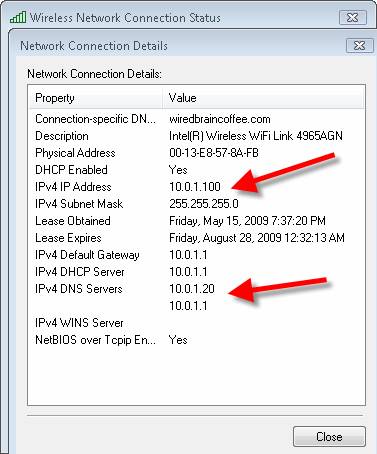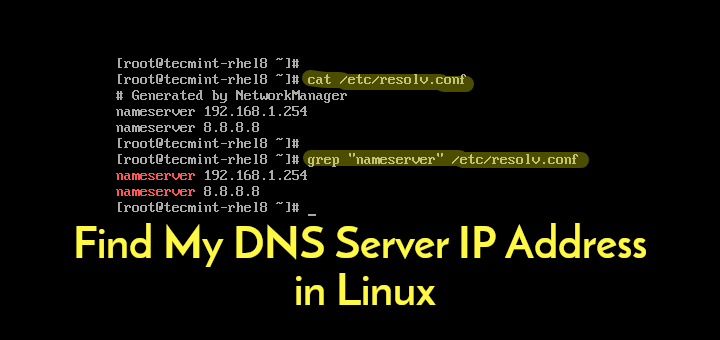
- #Check dns servers macbook command prompt how to#
- #Check dns servers macbook command prompt free#
- #Check dns servers macbook command prompt windows#
Here is the list of these third-party services: The benefit of some of these services is that they will show you a host of other related things like IP location, ISP name, Internet protocol (ipv4 and ipv6 address) etc. There are a few services on the Internet which can show you the public IP by simply opening a webpage. Run the following command to get the public IP address of your computer: (Invoke-WebRequest /ip).Content.Trim() Get my IP using PowerShell Get your computer public IP address using third-party services Open PowerShell by going to Run –> powershell. You can also use PowerShell to get the external/public IP without using any third-party IP lookup tool. The following command will get you the public IP address of your computer: nslookup nslookup external IP address Find public IP address of your computer using PowerShell Just run the following command on your command prompt and you will get your external IP address. You can get public IP information using the command nslookup and the OpenDNS service. Find your public IP address using Command Prompt If you have a home network, you can run these commands on one device even if multiple devices are connected to the Internet. Please note that you need to be connected to the Internet to use the below-mentioned commands and services. Let’s see how we can get the public IP information using command-line in Windows. Sometimes we need to verify what our external IP address is. If you want complete information of all the network interfaces on your computer, you can run the following command: ipconfig /all Get your public IP address using command-line This will show you the summary of all the connected network interfaces including their assigned IP addresses.


Let’s list down some of the locations and then we’ll go through the command-line option. If you want to know about the network information of your computer, you can get it from multiple locations.
#Check dns servers macbook command prompt windows#
Let’s find out how we can find the private and public IP addresses in Windows using command-line options. Please note that a single computer can have multiple LAN and public IP addresses.
#Check dns servers macbook command prompt free#
Since public IP is normally not provided free of cost, people use a mixture of private IP addresses that connect to a single public IP address to run the Internet on every network computer in a private network. Multiple computers can have a single public IP if a network is set up using a technique called NAT (Network Address Translation). Public or External IP address is the one provided by your Internet Service Provider (ISP).
#Check dns servers macbook command prompt how to#
This private IP can’t be accessed directly from the Internet.Īlso, read about how to check the mac address of your computer or any remote computer in the network. This IP is used to identify the computer within the LAN. The private IP is the one that is used within a local area network. The Public IP address or External IP address.Local Network (LAN) IP address or Local IP address or Private IP address or Internal IP address.There are mainly two types of IP addresses: Test-Connection $Computers | Out-File C:\PingResults.An IP address is used to identify a computer in a network.

$Computers = Get-Content C:\Computerlist.txt Or do it this way to get the list of servers Test-Connection server1, server2, etc, | Out-File C:\PingResults.csv You can also modify the ping command at the end of the command above as needed with options pertaining to ping.

You can do that by changing the value after -n. You may want to increase the number of ICMP packets sent to each server. Now, that’s probably good for just seeing if the server is accessible or not. The above script only sends one ICMP packet to each server you list. If you want to save the ping results, use this instead,įor /f "tokens=1" %a in (servers.txt) DO -n 1 %a > PingResults.txt This will attempt to ping every system in the list and return the result. Now, enter the following line on the command prompt:įor /f "tokens=1" %a in (servers.txt) DO -n 1 %a Next, open Command Prompt and navigate to the folder where you just created the file in which you listed the name of servers. Let's call it "servers.txt" and save it (as you going to ping server names so make sure name resolution is happening). First, put all of your server names into a text file with each server name on a separate line.


 0 kommentar(er)
0 kommentar(er)
